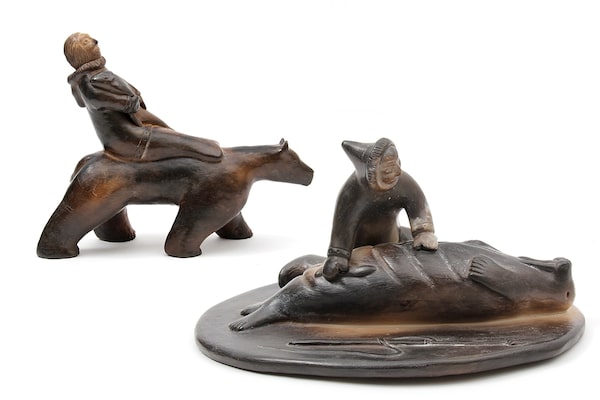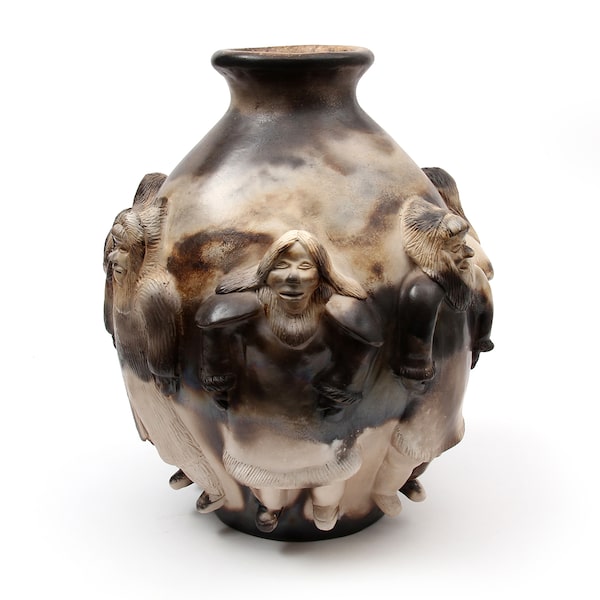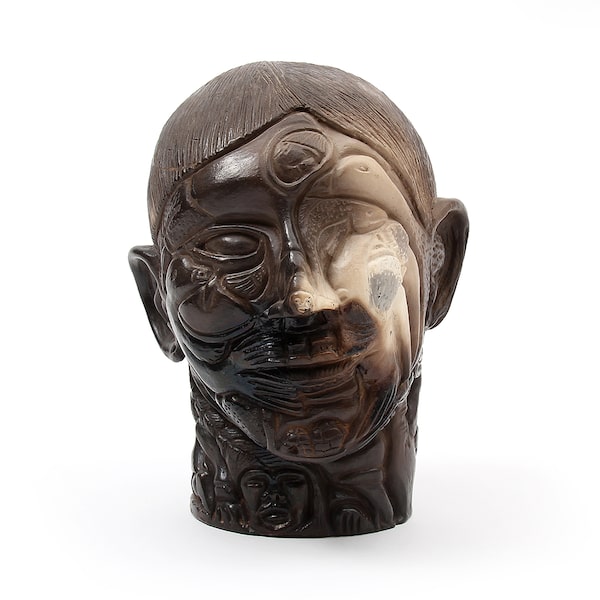
Roger Aksadjuak’s Sedna and Fish on Bear, at left, featuring the goddess Sedna, and Man Skinning Walrus. Aksadjuak learned to survive on the land and make ceramics from his father.GARDINER MUSEUM
Indigenous and Inuit art are treasures that allow us to have a glimpse into the richness of native cultures.
“With the Inuit works in particular, what really makes them unique is how they connect to myths and spiritual ideas of the folks who made them,” says Sequoia Miller, chief curator at the Gardiner Museum in Toronto. “The works are all representational. They generally will have human or animal figures or both. And most will interweave some aspect of traditional belief into the imagery of that.”

Ceramics of the North: Vase with Figures by Yvo SamgushakGARDINER MUSEUM
Miller says one of the challenges that museums like the Gardiner face is how much of the story should they let the artwork tell and how much context should they offer to visitors to help flesh out that story.
“We try to have a balance there. … We try to offer some context without overdoing it,” he says.
Currently on display at the museum is Inuit ceramic art, a medium that lends itself to the deep connection that Indigenous peoples have to the land.
“One of the really essential metaphors with clay is the fact that clay is of the Earth. Clay is literally the land itself,” Miller says. “We’ll often hear the connection to the land among really a wide range of Inuit communities.”

Ceramics of the North: Shaman’s Head by John Kurok and Leo NapayokGARDINER MUSEUM
Sarah Milroy, chief curator of the McMichael Canadian Art Collection in Vaughan, says it is important for people of all cultures to have access to Indigenous art because “the knowledge and insight of the people that loved this land first, and whose understanding of community, of fairness and human dignity, is something we can all learn from.”
McMichael will have an exhibition called Early Days: Indigenous Art at running from Nov. 21 to June 6, 2021.
Milroy said Indigenous art has always been at the heart of the McMichael collection.

Ceramics of the North: Thinking About Spring by John KurokGARDINER MUSEUM
“From the start, Robert and Signe McMichael collected Indigenous art, seeing it as critical to their vision of Canadian artistic excellence,” Milroy says.
“Currently, McMichael has a rich collection of historic and contemporary Northwest Coast works; Inuit sculpture, textiles, works on paper; an extensive collection of the Woodland School artists; and a roster of new acquisitions that have filled in some of the gaps that had opened up the collection over the past two decades.”
The Gardiner Museum is currently putting a large focus on Inuit artists.

Ceramics of the North: Figures and Animals by Roger AksadjuakGARDINER MUSEUM
“There’s a tradition of ceramics made by Inuit folks that began in the early 1960s and we have a selection of works based on those artists. Many of the styles and approaches have some echo of the stone carving work also made by Inuit artists,” Miller says.
The Inuit ceramics are unique in that, instead of being glazed, the Inuit work is smoke-fired, says Miller.
For students, Gardiner also has a unique new school program called unipkaaq: Storytelling Through Clay. They will learn about the community of Rankin Inlet, Nunavut, in the 1960s and 70s when Inuit peoples, who had been renowned for their stone and bone carvings, began working as a cultural revolution was taking place.
Long renowned for their stone and bone carvings, the Inuit peoples of Nunavut began working with ceramic sculptures, helping them revitalize Inuit culture and way of life.
Advertising feature produced by Globe Content Studio. The Globe’s editorial department was not involved.